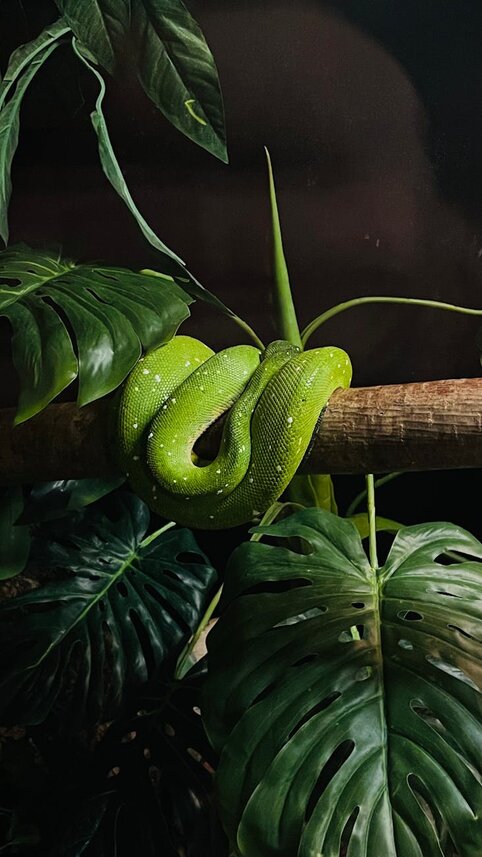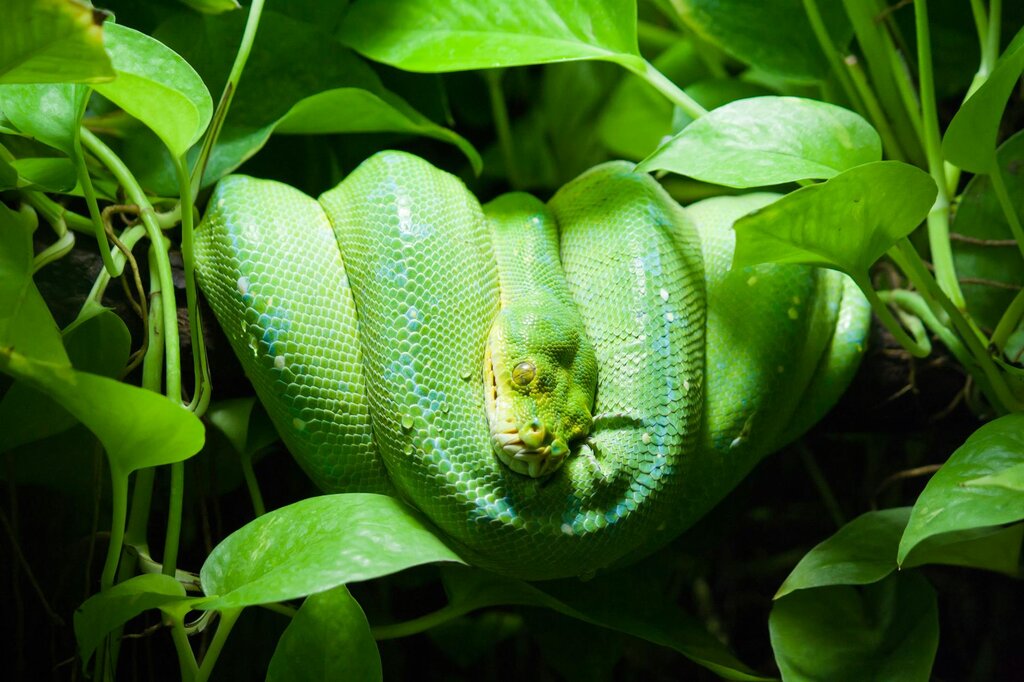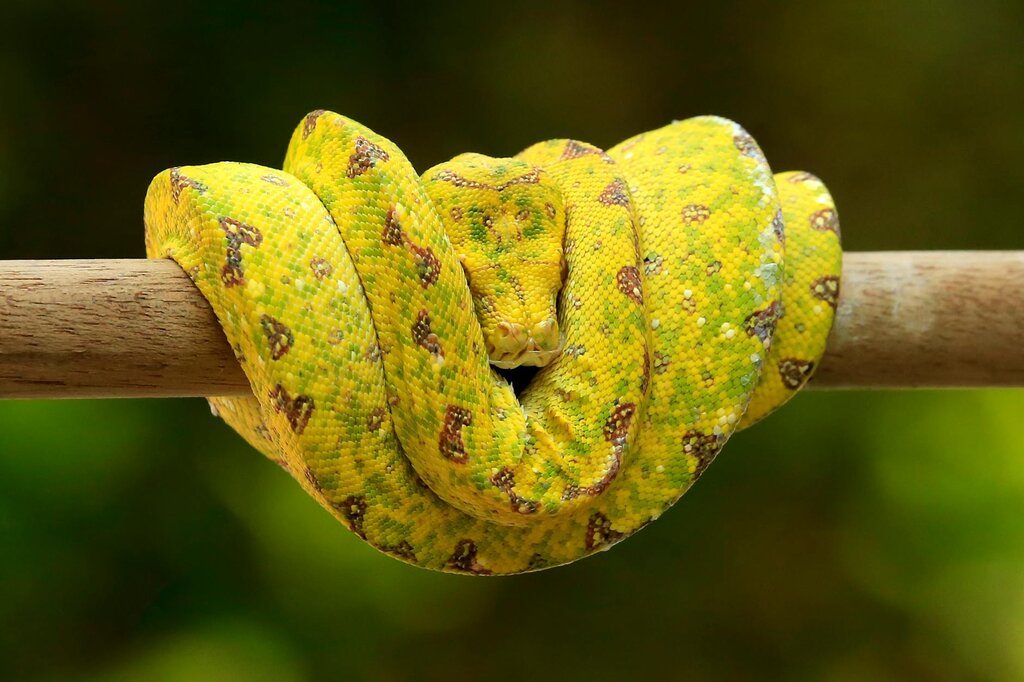Handling green tree pythons
Regular, gentle handling is the key to helping your snake feel comfortable being handled, reducing the likelihood of your snake striking or biting. Green tree pythons may never become easy to handle, but most will become amenable to short periods of handling. Snakes can be handled up to twice a day, but ensure that each session does not last longer than your snake's comfort. In the beginning, handling sessions should last no more than 10 minutes.
It is imperative that green tree pythons be handled gently, slowly, and not restrained excessively to ensure that all handling episodes are a positive experience. Green tree pythons are more likely to become difficult to handle and aggressive after negative experience.
Approach green tree pythons from below, and ensure that they are not surprised. Always support their entire body weight, and allow them to come to you.
Signs of comfort include slow, deliberate movements, and regular tongue flicks. Tongue flicks are your snake's way of assessing their surroundings by smell, and slow, regular flicks indicate that your snake is curiously figuring out what's going on.
Signs of discomfort include rapid movements or your snake trying to escape into a dark place, such as a sleeve. Rapid, irregular tongue flicks may indicate that your snake is unsure or concerned about what is happening.
Never allow children or people inexperienced with reptiles to handle your snake unsupervised, as injury or escape may occur. They can be surprisingly fast when they're worried!
Natural sunlight for pythons
Regular exposure to natural sunlight is good for all reptiles, and this can be a positive handling experience for you and your snake! On sunny days where it is not too cold, it can be enjoyable to sit outside with your snake and a good book. Ensure that your snake can't get out of the area easily, and can't get away and hide or become lost.
At least an hour a week is a good minimum for natural sunlight, and there's no such thing as too much natural sunlight for Australian reptiles.
Snake shedding
All snakes will shed regularly, and young snakes may shed as often as every 3 weeks when they are growing rapidly. Signs that your snake is going into shed include duller colouration, behavioural change, and cloudy eyes. The cloudy eyes are the "spectacles", or clear scales over the eyes, starting to separate from the new scales underneath in preparation for shed.
If it looks like your snake is preparing to shed, the best thing to do is ensure that the water source has been freshly cleaned and refilled, ensure that the temperature is optimal, then leave your snake alone until they have finished shedding. This includes stopping feeding and handling. If your snake is due for a feed, they can be fed after the shed is complete.
Handling or feeding your snake when they are coming into shed is stressful, and it can also lead to dysecdysis, or a pathological/abnormal shed where the shed doesn't come off in one piece. If you are concerned your snake hasn't shed properly, book a vet visit, and do not attempt to peel off any shed. This may make the problem worse.




